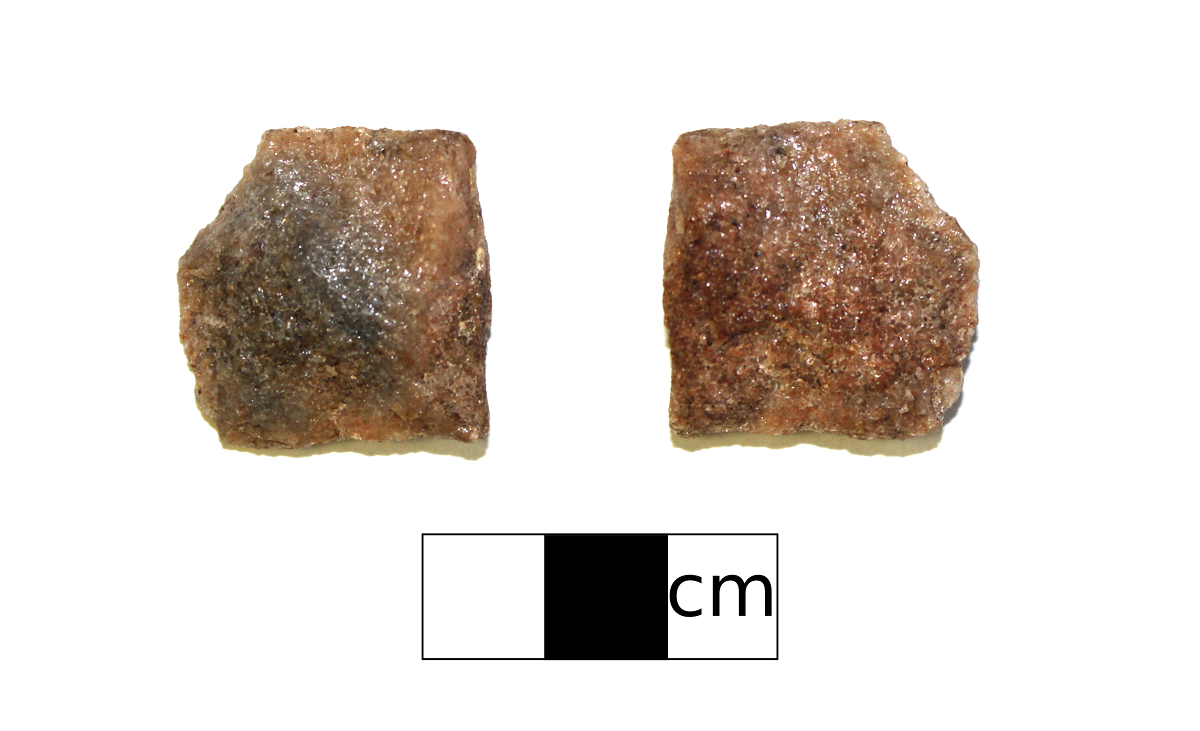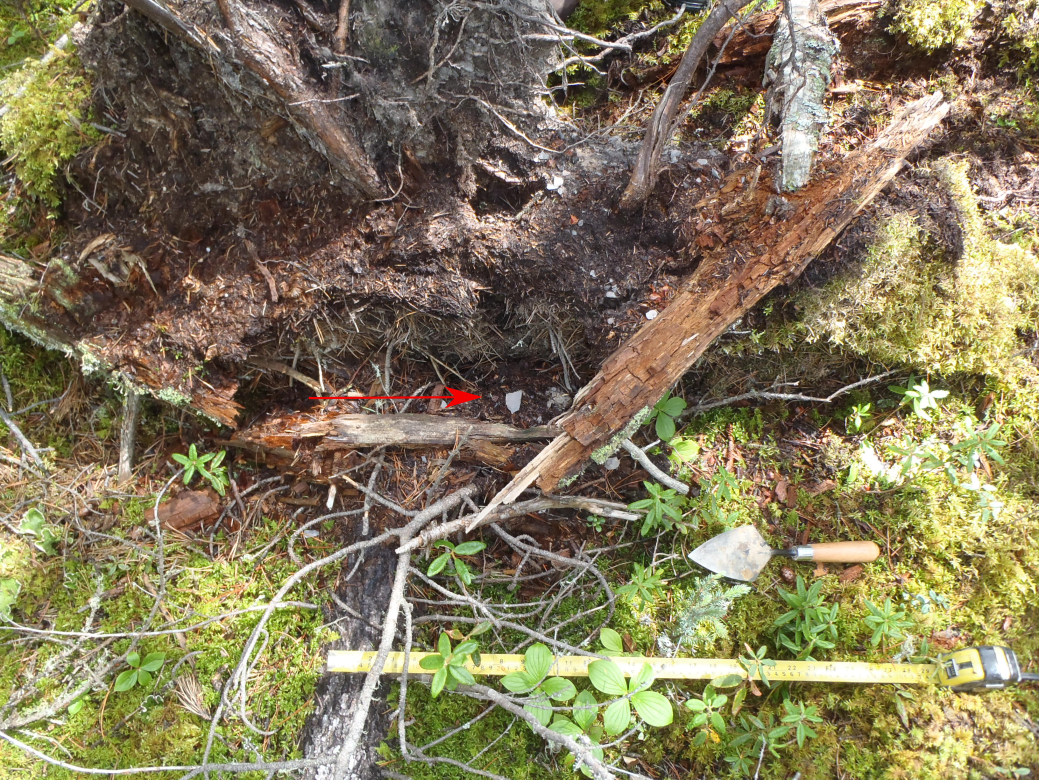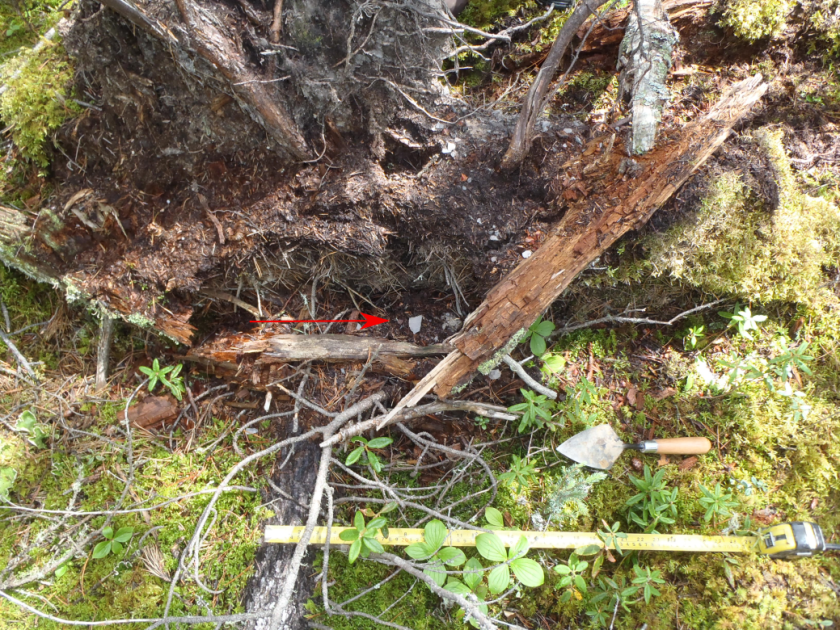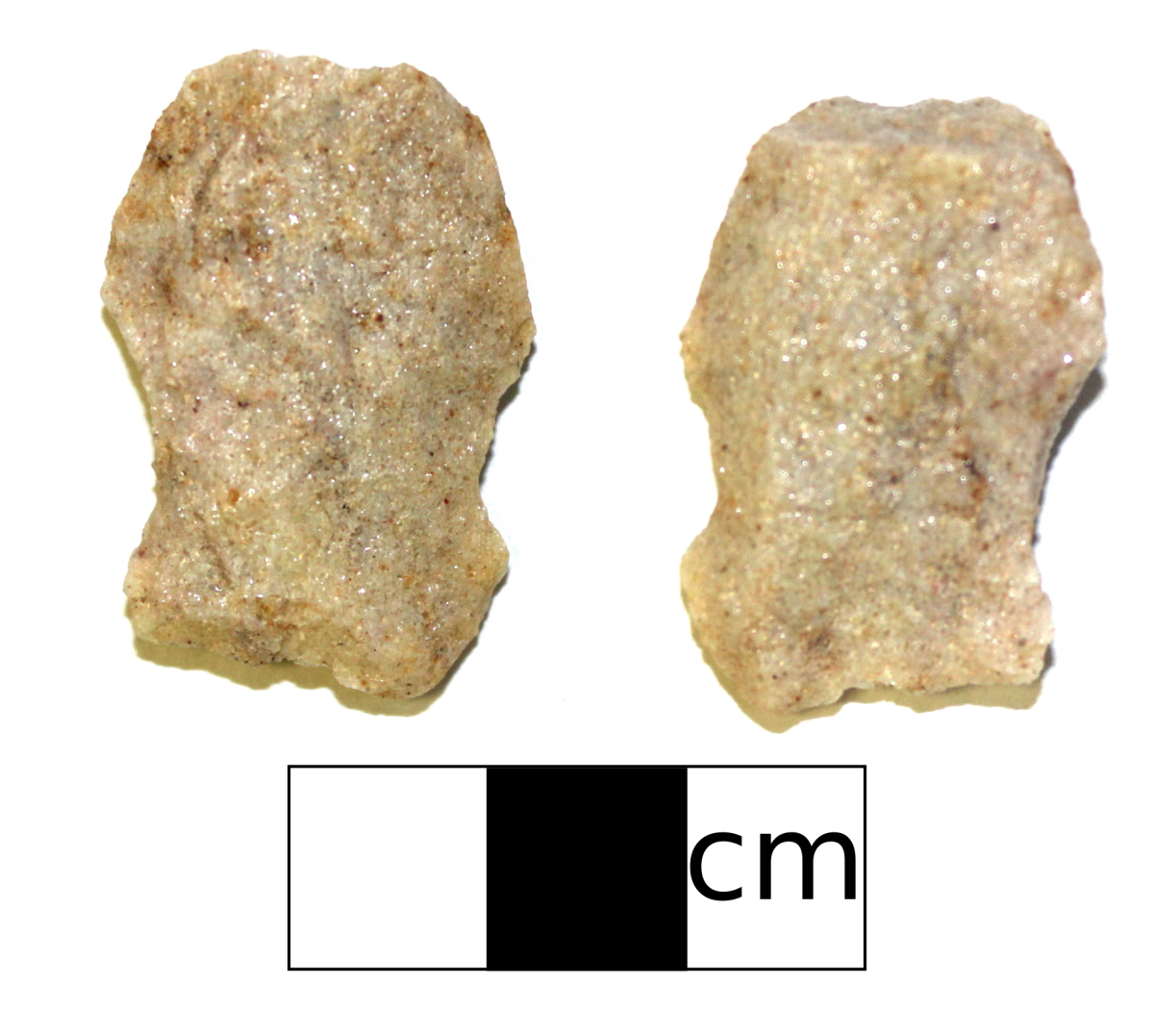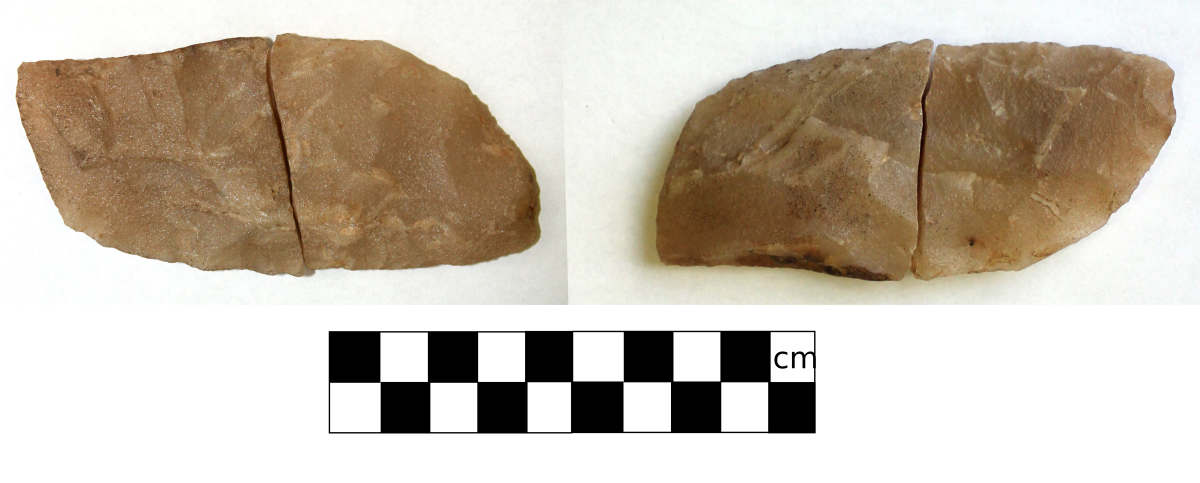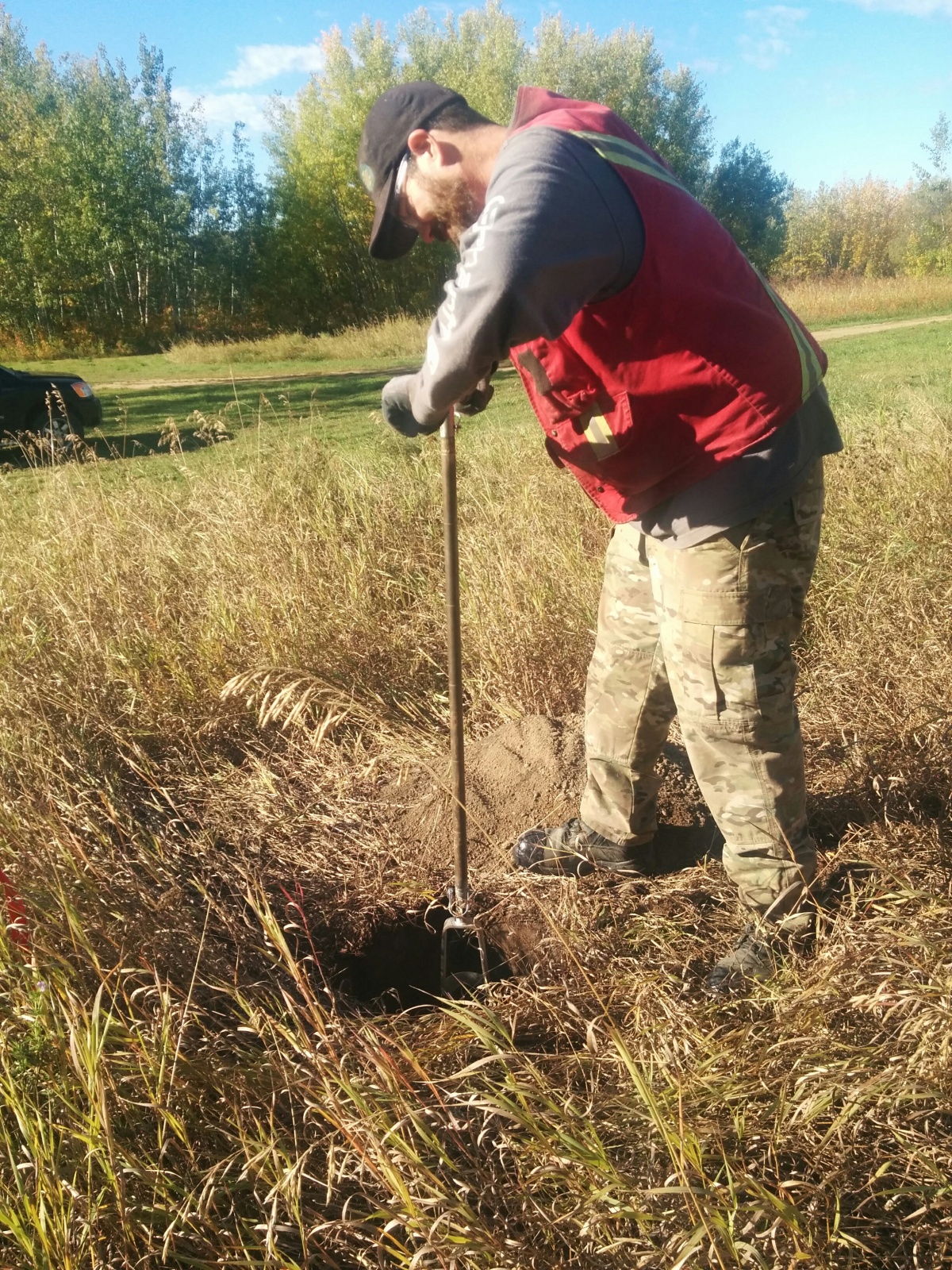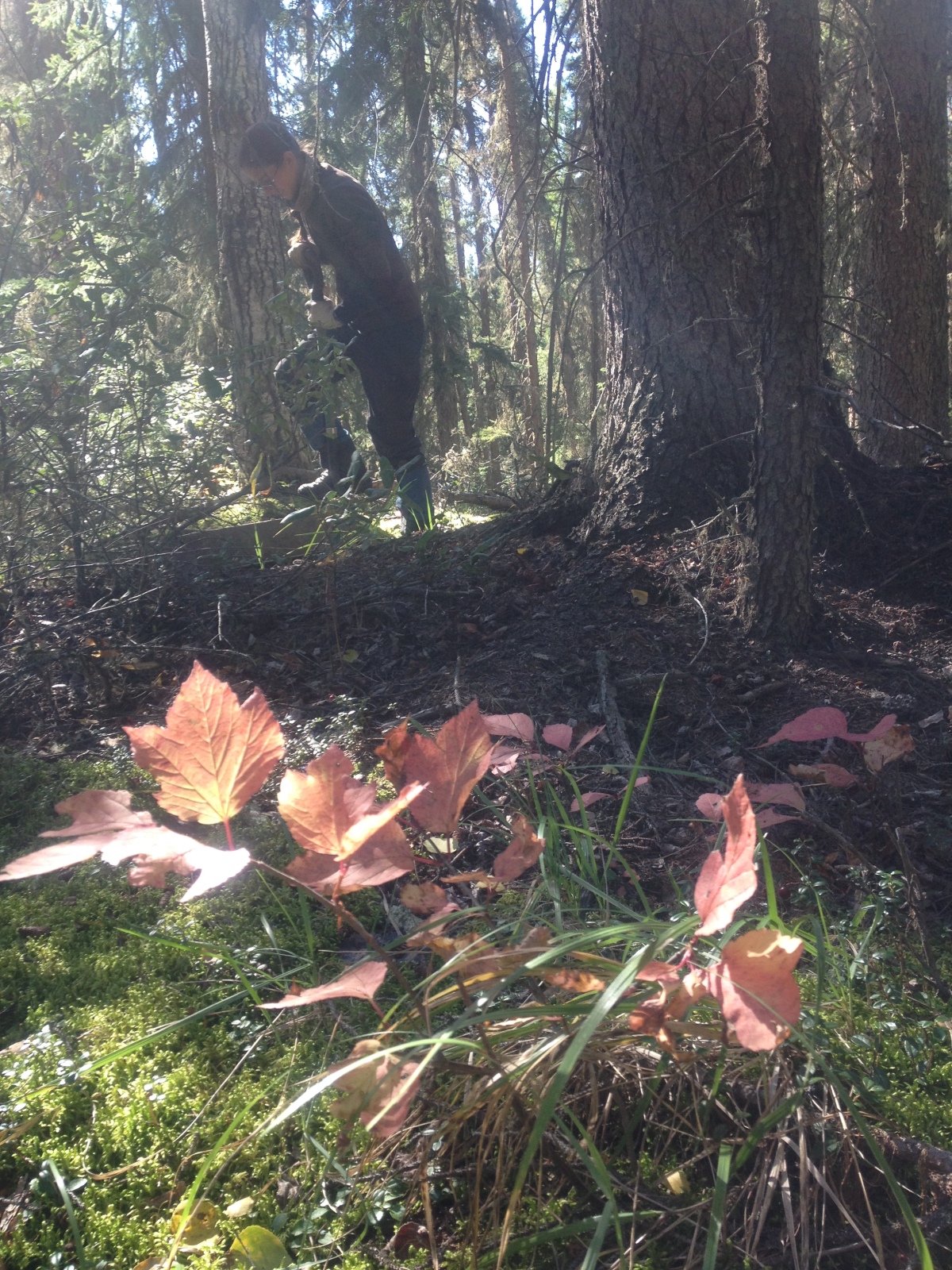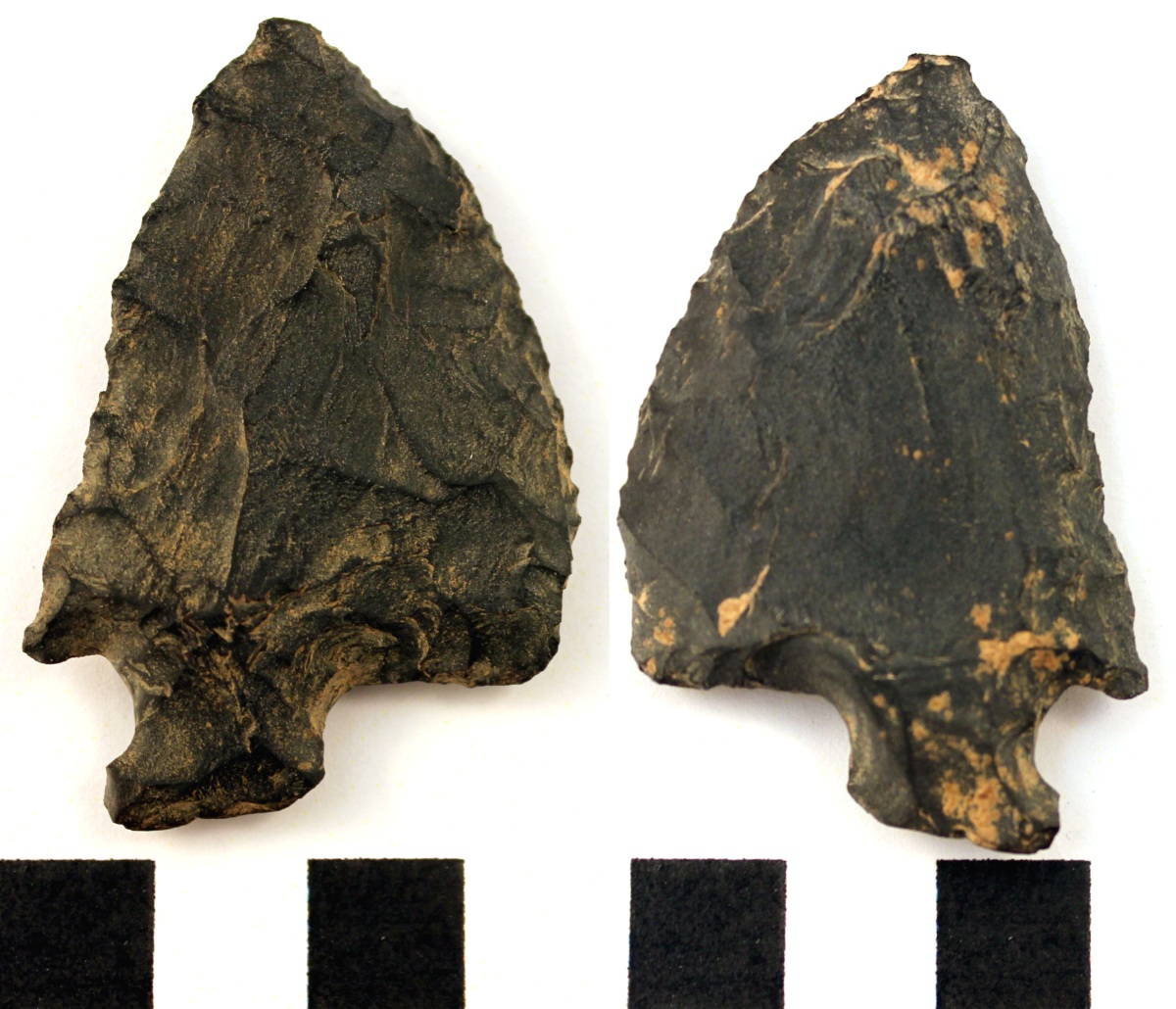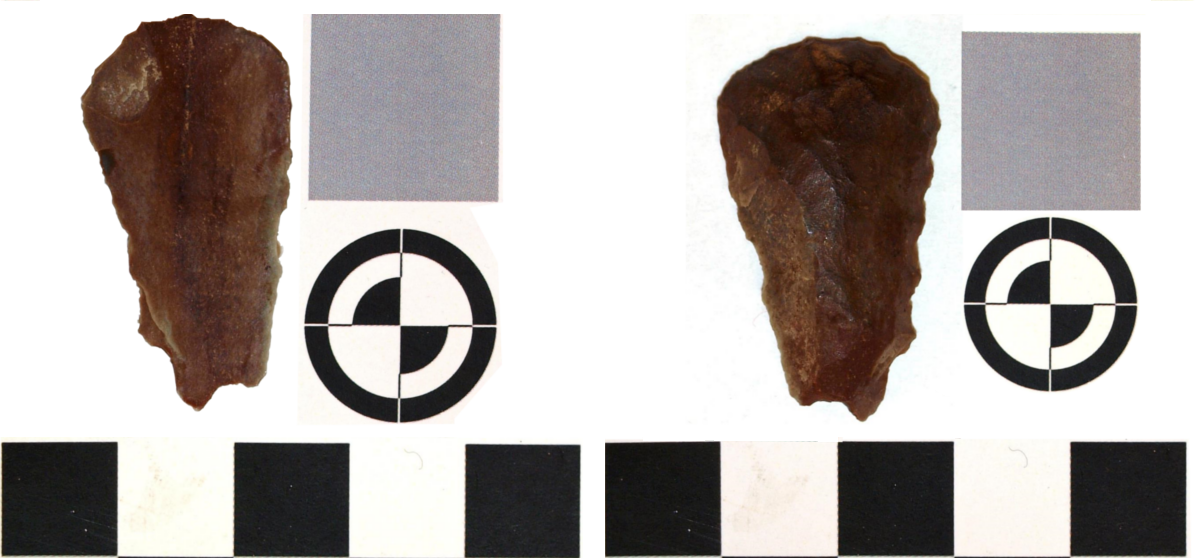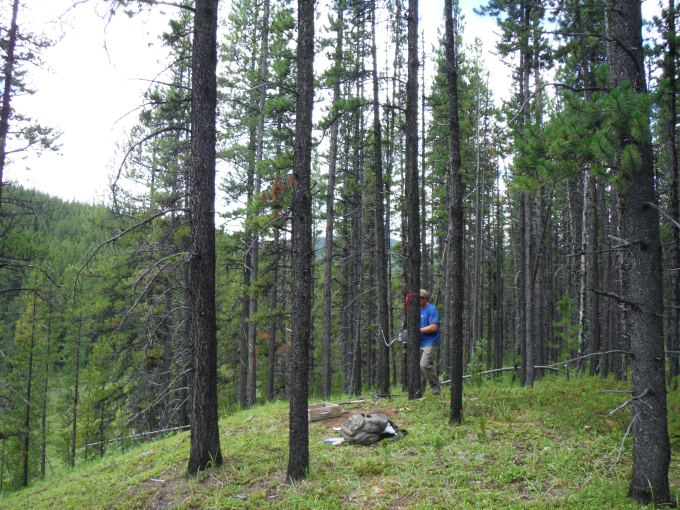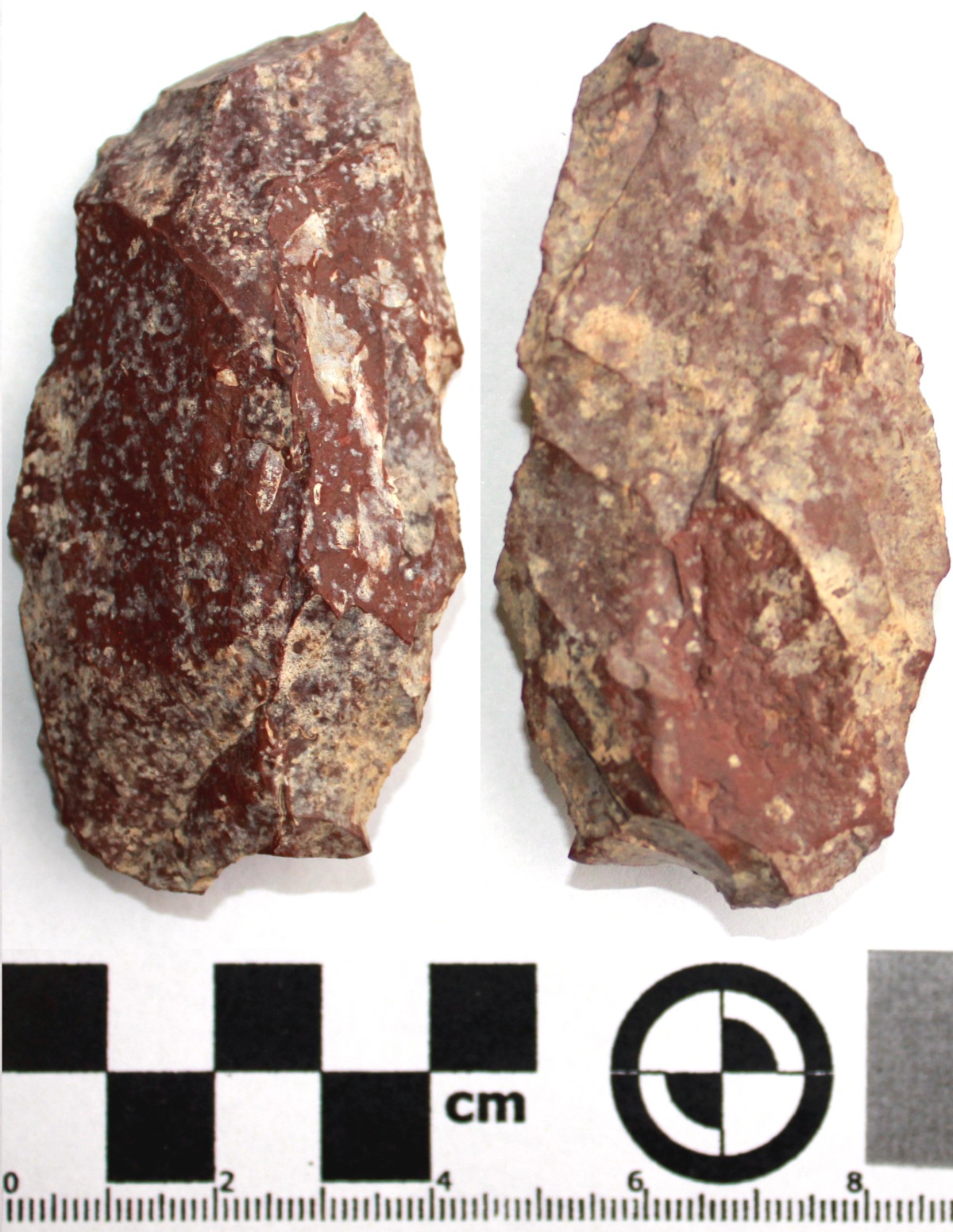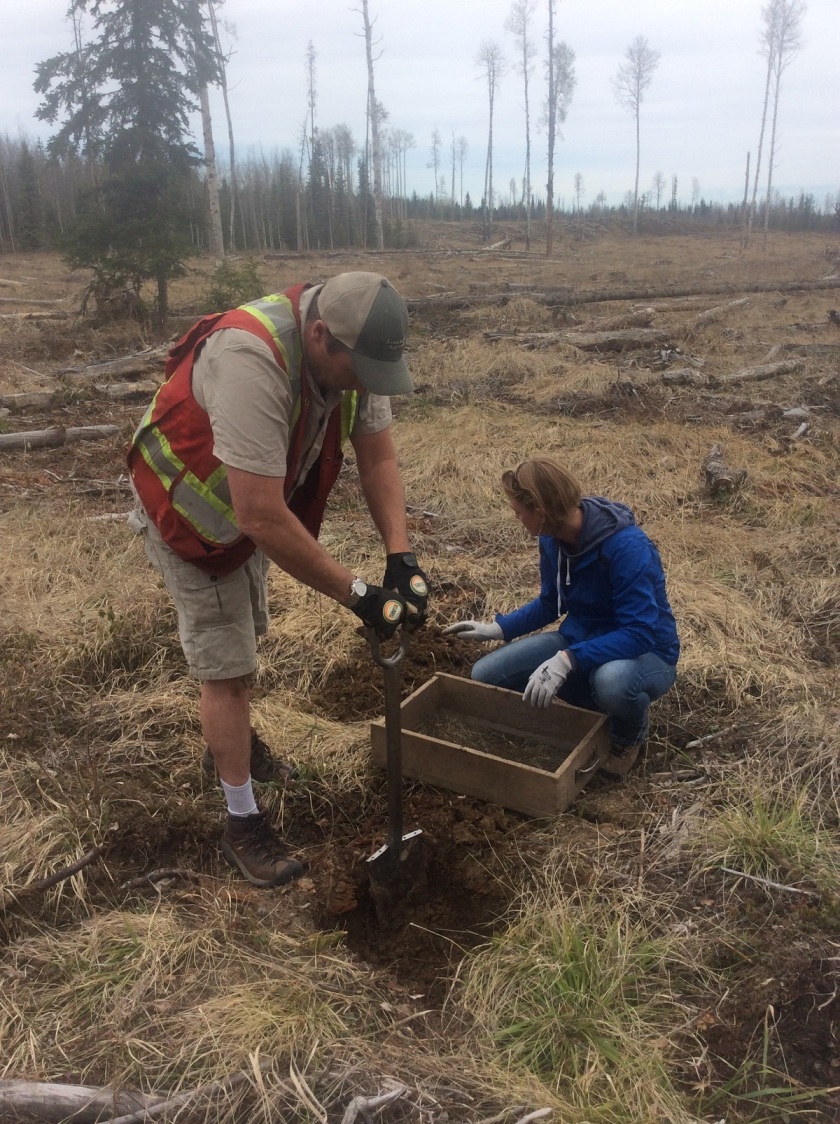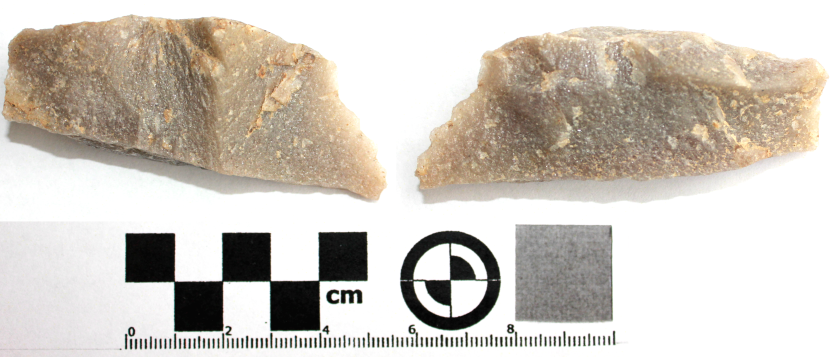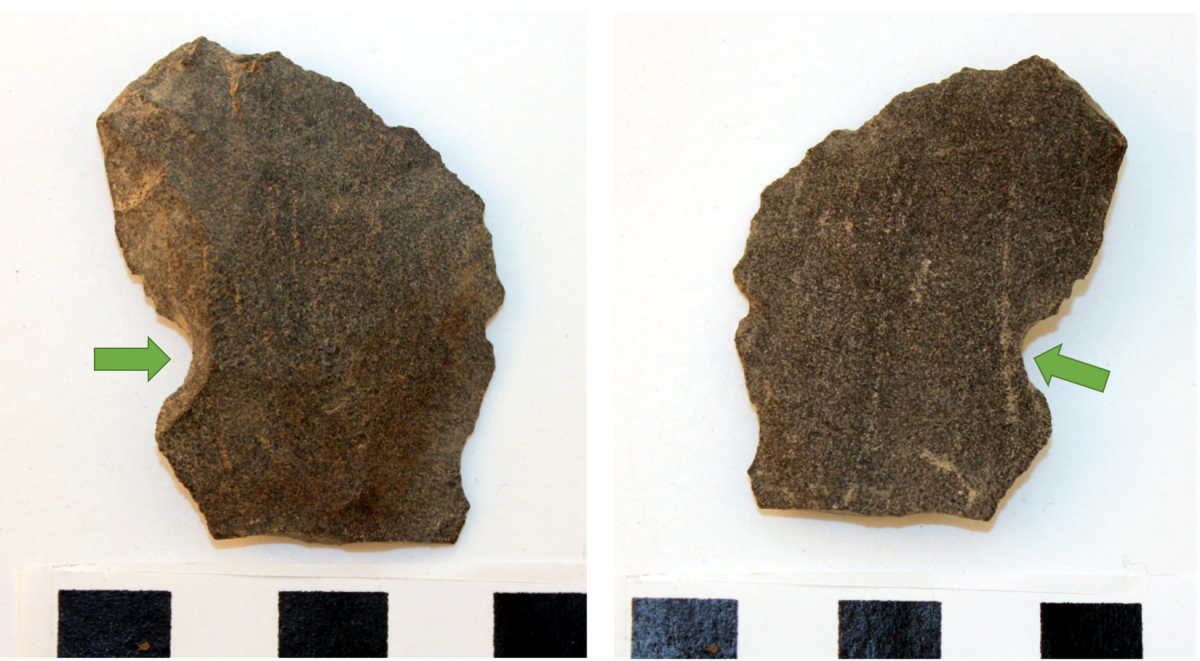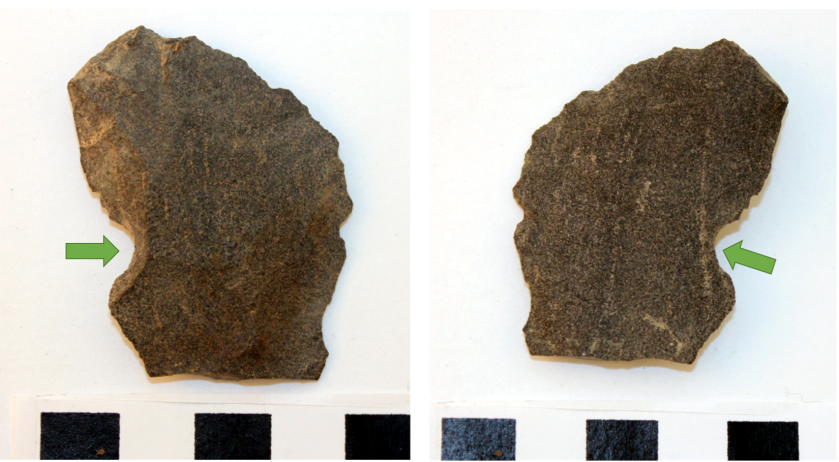This little guy is a wedge, or sometime as it is sometimes known as its french name, pieces esquilles. These tools are thought to have been used to split organic materials like wood and bone, much like an ancient stone chisel. One of the sharp sides of the wedge would be placed against the material that you wanted to split, and you would hammer the other end with a stone to drive the wedge through it. Since this little tool would literally be caught between a rock and a hard place, using a wedge would often create bipolar flake scars. You will also often see crushing and lots of hinge fractures on the tops and bottoms of these tools, where the edges are being crushed against the hammerstone and the material being split. As a result, wedges often have a short and squat rectangular body shape.
This particular specimen is made from a very coarse grained quartzite. Based on the reddish hue of the stone, it may have even been heat treated to improve the quality of the material. It was found near Wabasca-Desmarais, on a high ridge that overlooked a broad stream valley.

